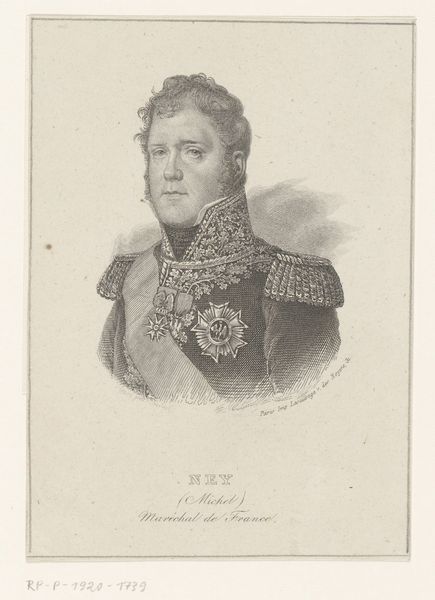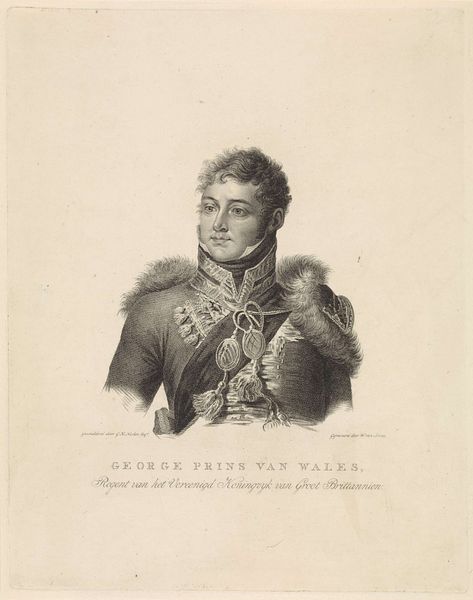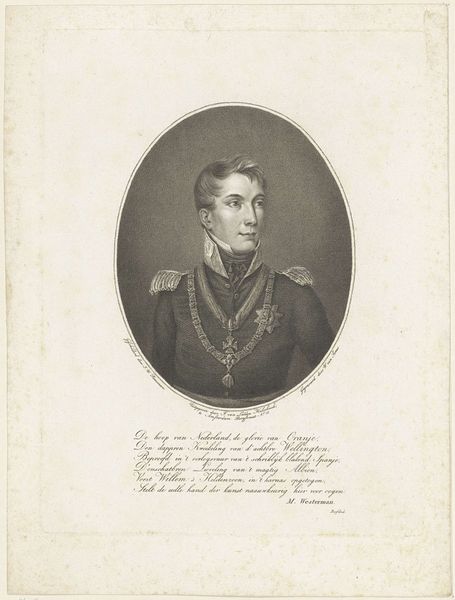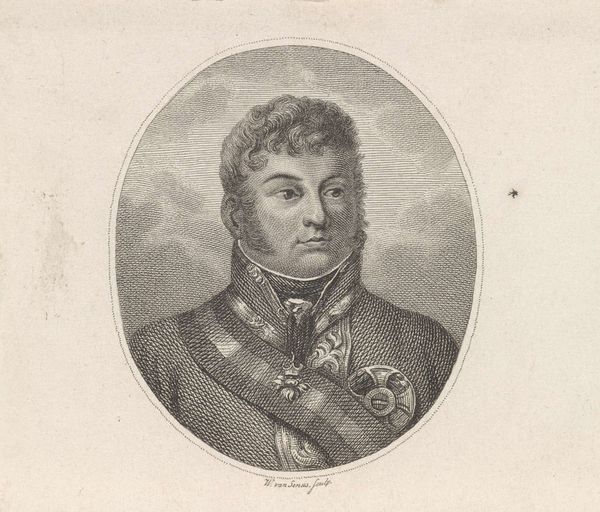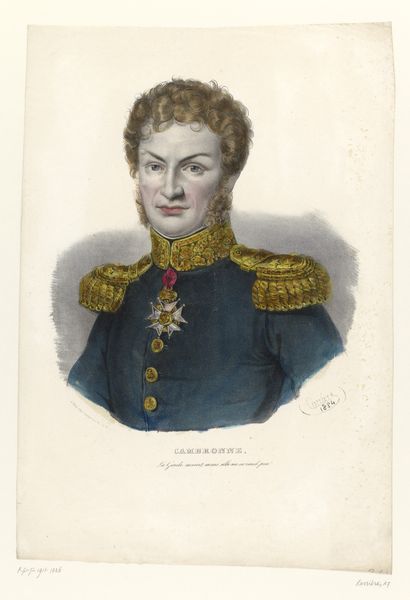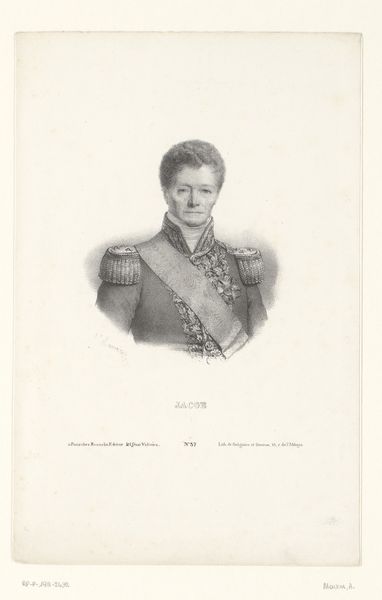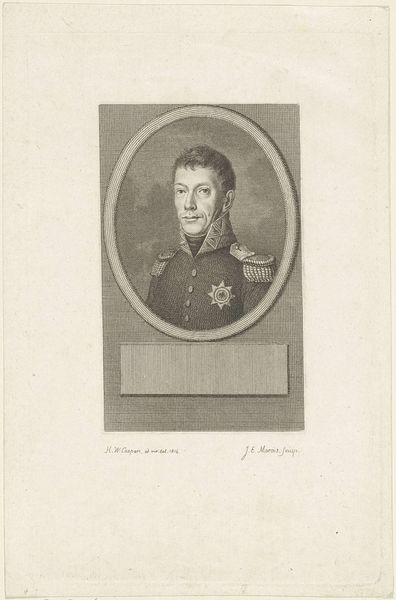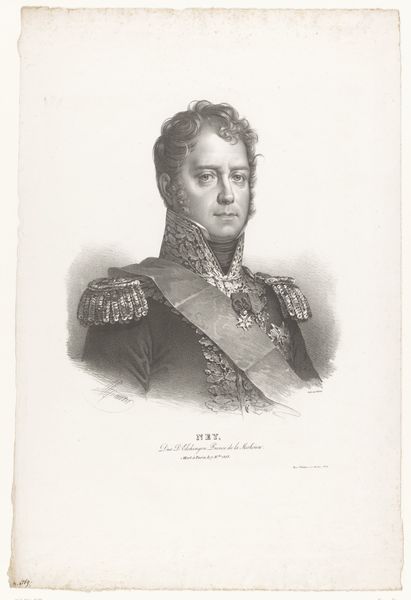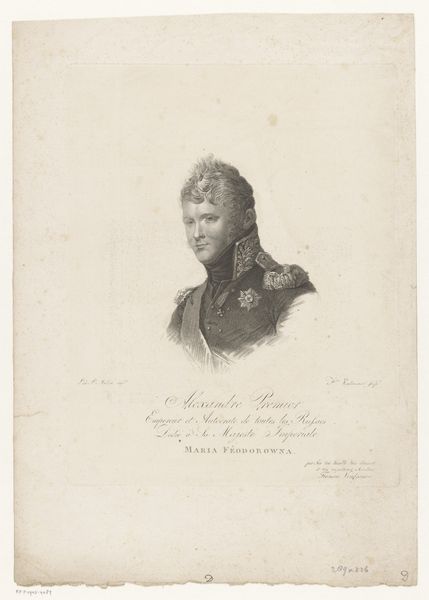
print, engraving
#
portrait
#
neoclacissism
# print
#
old engraving style
#
portrait reference
#
19th century
#
engraving
Dimensions: height 250 mm, width mm
Copyright: Rijks Museum: Open Domain
Curator: Here at the Rijksmuseum, we have an engraving titled "Portret van Alexander I (tsaar van Rusland)", dating roughly from 1801 to 1851. The artist is Willem van Senus. Editor: It’s incredibly precise, this image! You can see every thread in the Tsar’s coat and a wistful look in his eye, making him appear almost gentle. A softness despite the severe military outfit, somehow very poetic. Curator: Yes, the method of engraving, particularly during the Neoclassical movement, was one of meticulous labor. This particular piece is an example of the high-quality printmaking that circulated images widely during that time, shaping public perception of leaders and events. We see the poem at the bottom further enforcing the idea of him being a noble and respectable leader. Editor: Exactly! The choice of black and white helps emphasize the serious nature of the portrait, doesn’t it? Almost as if turning him into a romantic hero, fighting off evil in his tailored suit, ready to shed a tear at any moment! Curator: And let's not forget the social function of portraits like these. They weren't merely aesthetic objects. Consider how this type of imagery contributes to the construction of power and authority during a period of significant political upheaval. The materials, ink, and paper used were carefully chosen and reproduced to make statements about power. Editor: That’s where the magic is—transforming mundane materials into an almost sacred thing that reflects ideas! Curator: Precisely! That sort of analysis of artistic skill and careful execution adds an additional layer of depth and comprehension to its social and material aspects. Editor: I like that our man Alexander looks so dreamy; now I will daydream myself a bit too!
Comments
No comments
Be the first to comment and join the conversation on the ultimate creative platform.
